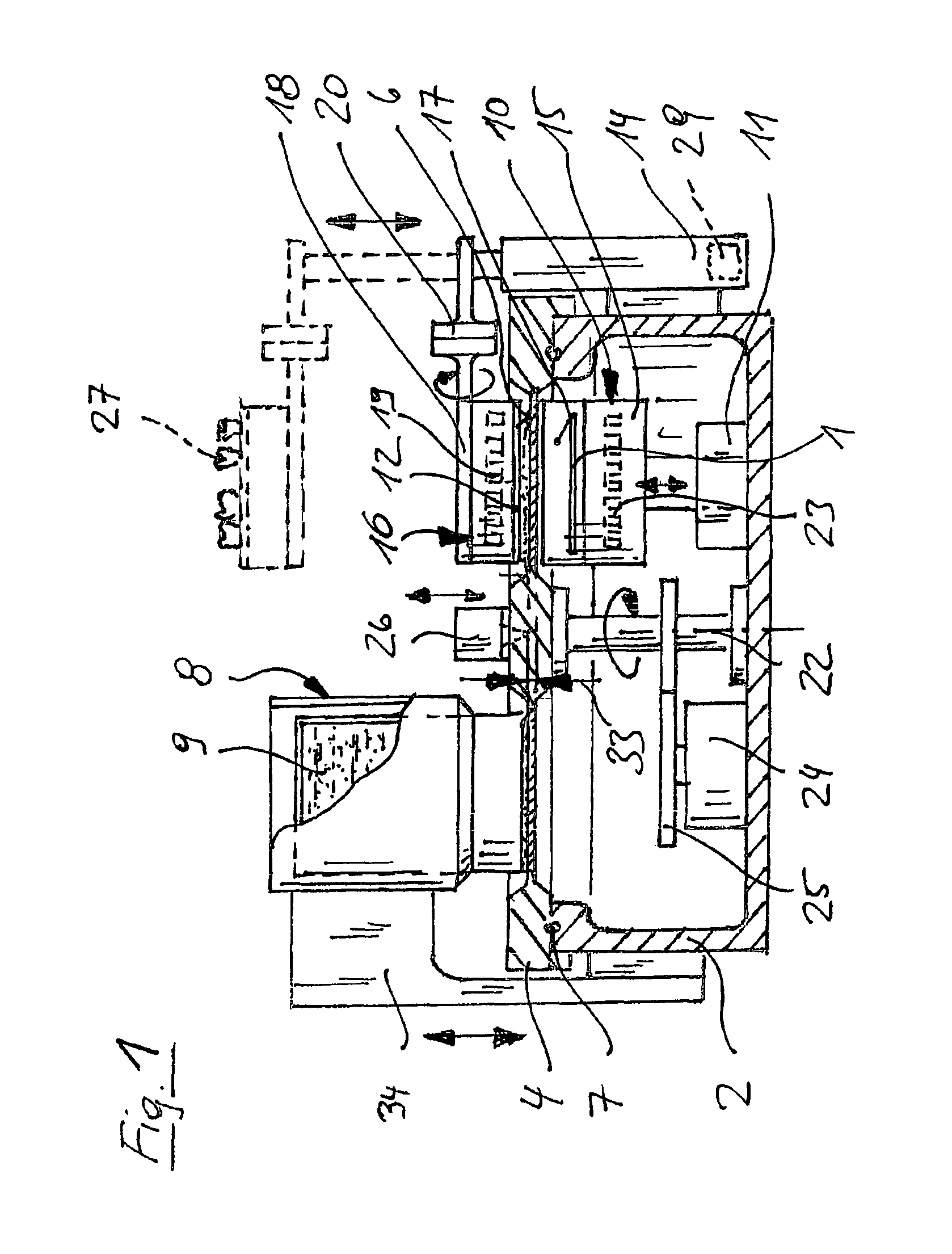Device and method for processing light-polymerizable material for building up an object in layers
a technology of polymerizable materials and objects, applied in the field of objects building up, can solve the problems of inability to improve, thin layers can be applied in reproducible, and the methods used today for ceramic dental restoration elements produced by removing materials, etc., and achieve the effect of high viscosity
- Summary
- Abstract
- Description
- Claims
- Application Information
AI Technical Summary
Benefits of technology
Problems solved by technology
Method used
Image
Examples
Embodiment Construction
[0022]The device according to the invention is characterized in that a further exposure unit is provided for exposing the surface area of the build platform from the side opposite from the projecting exposure unit, in that the build platform is formed such that it is at least partially transparent or translucent and in that the control unit is designed to control the further exposure unit, at least while building up the first layer, which adheres to the build platform, for exposure in the prescribed geometry, in order to achieve complete polymerization and adhesive attachment at least of the first layer to the build platform. This is of advantage in particular for light-polymerizable materials in which light is strongly absorbed or diffused, since these materials cannot be polymerized reliably and reproducibly completely by exposure exclusively from the side facing away from the build platform.
[0023]Furthermore, this complete polymerization has the effect of producing exact parallel...
PUM
| Property | Measurement | Unit |
|---|---|---|
| thickness | aaaaa | aaaaa |
| thickness | aaaaa | aaaaa |
| thicknesses | aaaaa | aaaaa |
Abstract
Description
Claims
Application Information
 Login to View More
Login to View More - R&D
- Intellectual Property
- Life Sciences
- Materials
- Tech Scout
- Unparalleled Data Quality
- Higher Quality Content
- 60% Fewer Hallucinations
Browse by: Latest US Patents, China's latest patents, Technical Efficacy Thesaurus, Application Domain, Technology Topic, Popular Technical Reports.
© 2025 PatSnap. All rights reserved.Legal|Privacy policy|Modern Slavery Act Transparency Statement|Sitemap|About US| Contact US: help@patsnap.com



